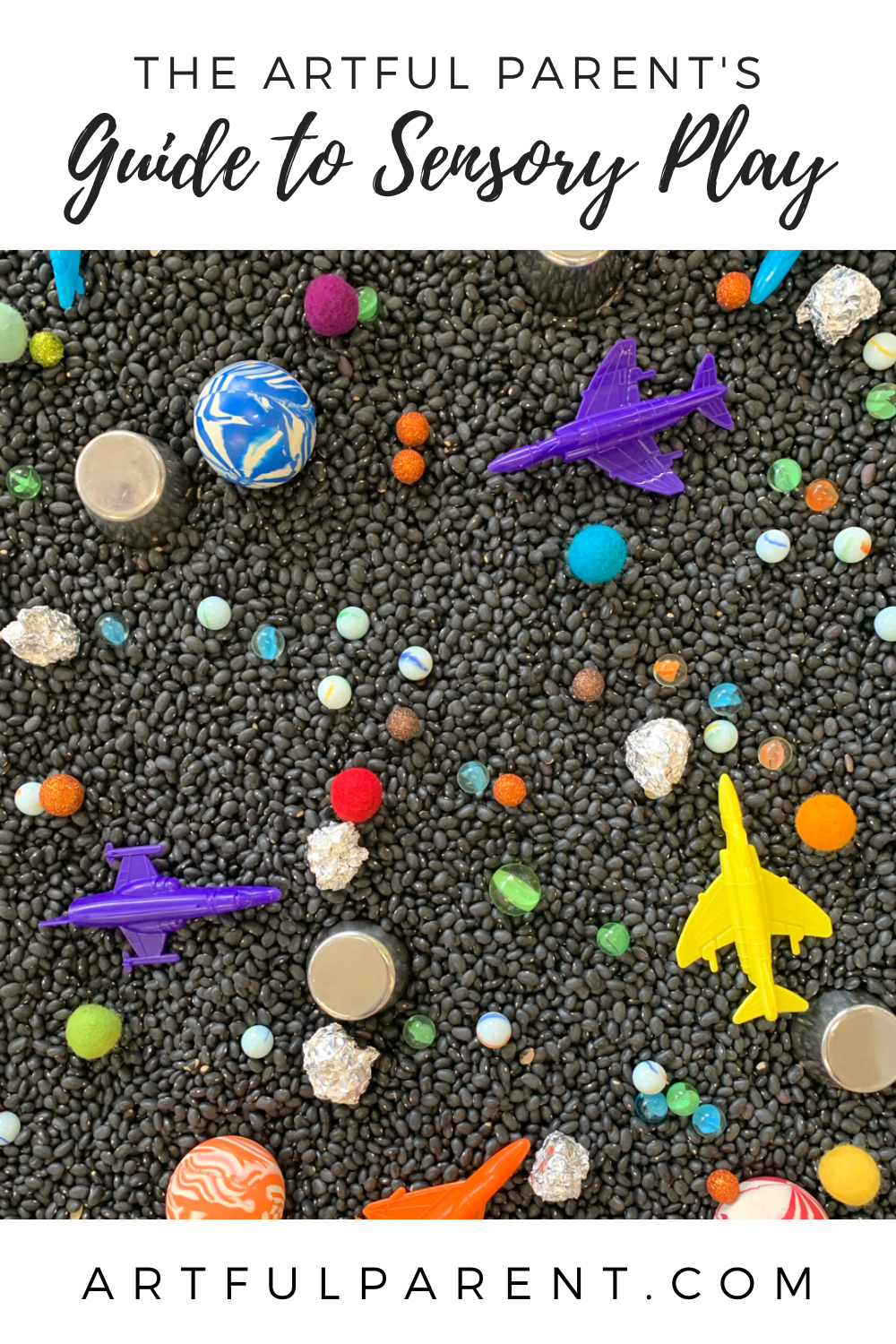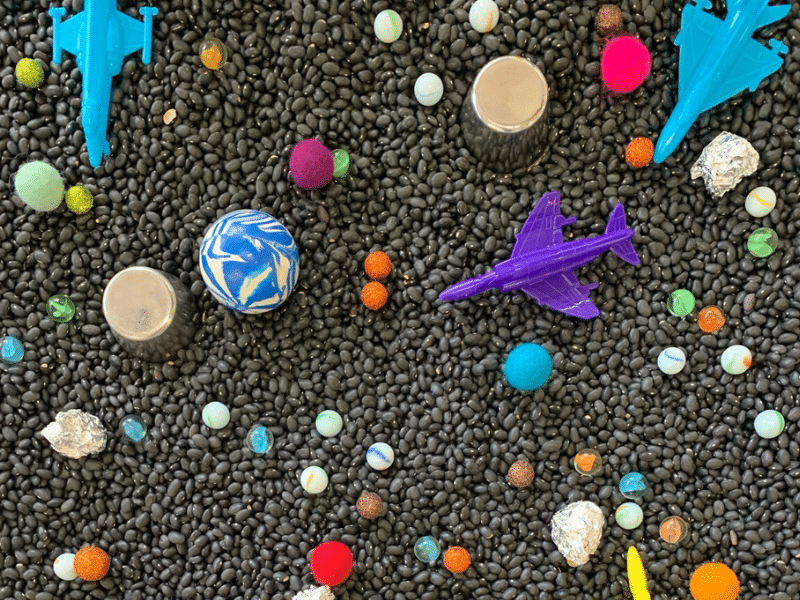Erin DeThomas of Makers explains what sensory play is and shares why sensory play is important along with lots of ideas for sensory bin ideas for kids.
Updated March 2024
Sensory play is something I was doing with my kiddos long before I even knew it had a name.
I first started setting up sensory play activities for them because I had finally found a way to keep them engaged in one activity for an extended period of time.
Little did I know that by creating these sensory play experiences, I was supporting their cognitive growth, language development, gross and fine motor skills, and social and emotional skills all at the same time!
Why is Sensory Play Important?
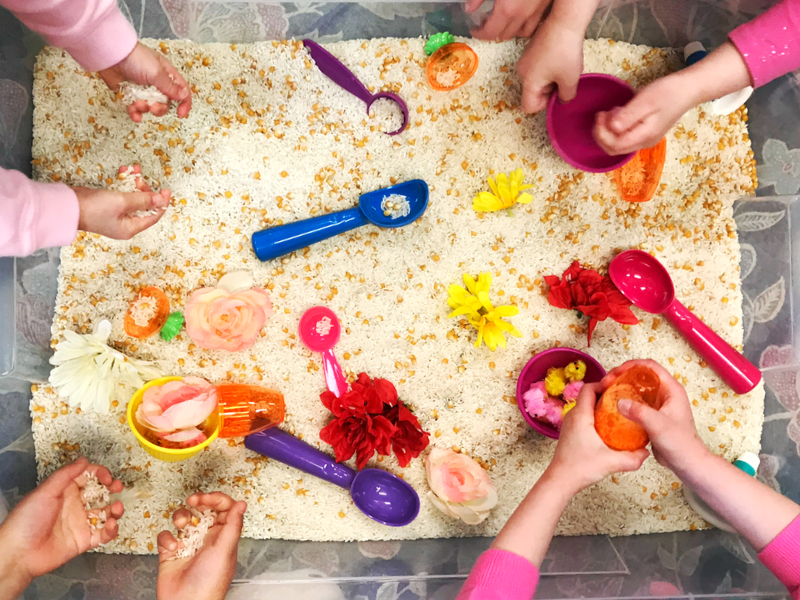
Benefits of Sensory Play
1. Sensory play stimulates multiple senses at the same time. This helps to build pathways (or connections) between nerves within the brain which then helps to lay a solid foundation for more complex tasks later down the road.
2. Connections are made: Children begin to identify and recognize particular properties of an object (liquid or solid) and can make connections to other objects with those same similarities.
3. Language development: when we discuss the different properties and elements of each, it introduces kids to new vocabulary which aids in language development.
4. Strengthens fine and gross motor skills: The physical act of mixing, scooping and sifting strengthens fine and gross motor skills.
Add in elements to sensory bins that encourage imaginary play because when kids have the opportunity to play with you and/or others, it enhances their social and emotional skills.
Sensory Play Ideas
Although it may seem a little overwhelming at first, sensory play is actually very easy to incorporate at home. Having a few rules or guidelines for your children will help keep the sensory play contained and therefore, more likely to happen.
Related Stories from The Artful Parent
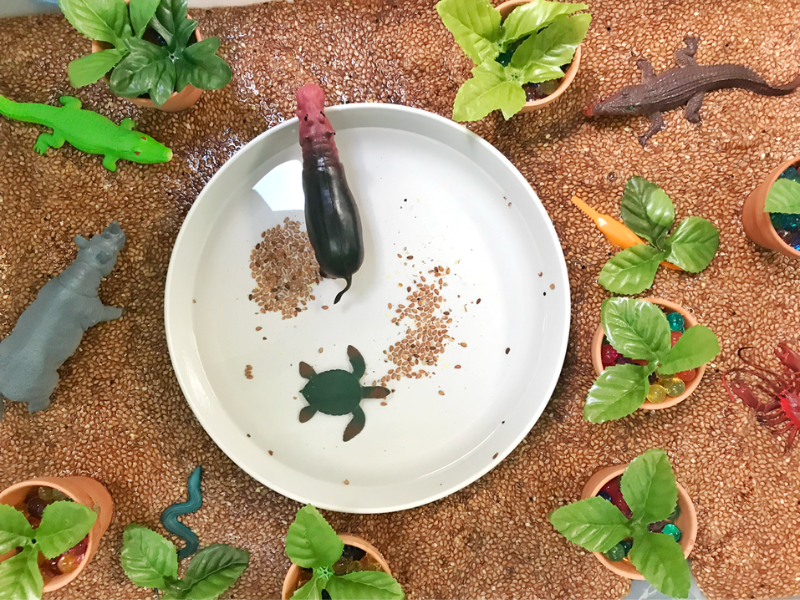
Rules for Sensory Play
1. A Designated Space: Begin by putting down a blanket, sheet or old shower curtain your kids can spill things on. It’s good to designate a ‘space’ for the sensory materials and remember to always encourage the materials to stay in the bin. This is something you’ll probably have to remind your kids about often.
2. Keep Materials in the Bin: At home I’ve found myself saying, “If you can’t keep it in the bin right now, I’m going to pack it up and we can try again later…”
It’s pretty much impossible for them not to spill at least a little, especially when they’re focusing so hard on building those fine and gross motor skills. But kids should know the materials are supposed to stay in the designated area.
Now that you’ve decided on a space for your sensory bins, get a large but shallow bin and choose a filler.
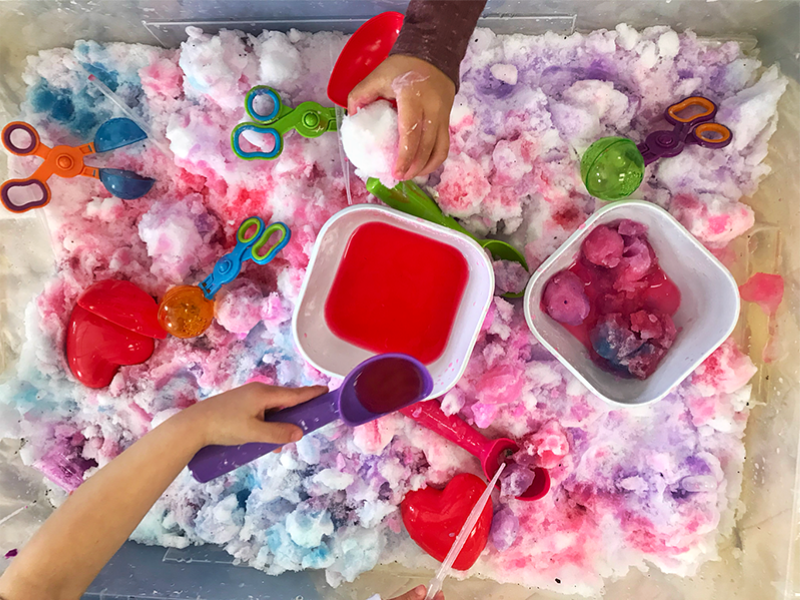

Materials for Sensory Play
A great place to start is with a basic filler like:
- rice (which you can dye if you’re feeling ambitious)
- beans
- water (add food coloring or liquid watercolors and some essential oils for an extra wow factor)
- snow
- shredded paper
If you’re feeling extra adventurous you can mix up a batch of:
- 10 things boomers did every Christmas that would completely confuse Gen Z today - Global English Editing
- I’ve interviewed 500+ millionaires, and they all avoid these 7 middle-class money mistakes - Global English Editing
- 9 quiet habits of men who had no strong male role models growing up, says psychology - Global English Editing
There are also some fantastic sensory fillers like Cloud Clay made by DSS or Instant Snow which you can find on Amazon.
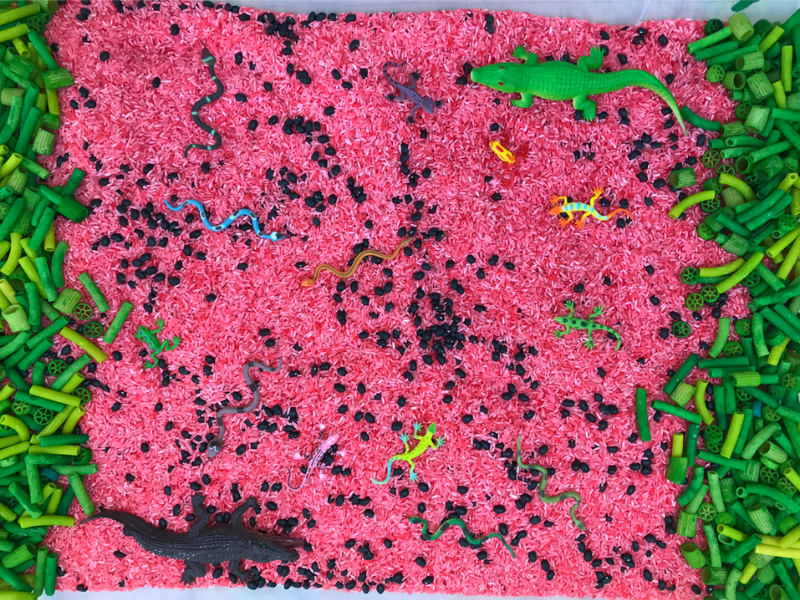
How to Encourage Sensory Play for Kids
Once you have a filler (which ideally should cover the entire bottom of the bin), you can add in all the goodies. Sensory bins are so great because you can stagger the materials you give your kids to extend their play (and learning).
Scooping, filling, sifting, and stirring are all excellent ways for kids to build their fine and gross motor skills. If you’re using a liquid base, think about adding in a baster or using droppers because the squeezing is a great way to strengthen their finger and hand muscles.
At this point, let your child explore and experiment with the bin and the basic tools you’ve provided. Talk with your little one about what they notice, feel, smell, or hear.
- Does it remind them of anything?
- Have they felt anything like this before?
- Do they like the way it feels?
All of these questions are great ways to begin a conversation to enhance their language development.
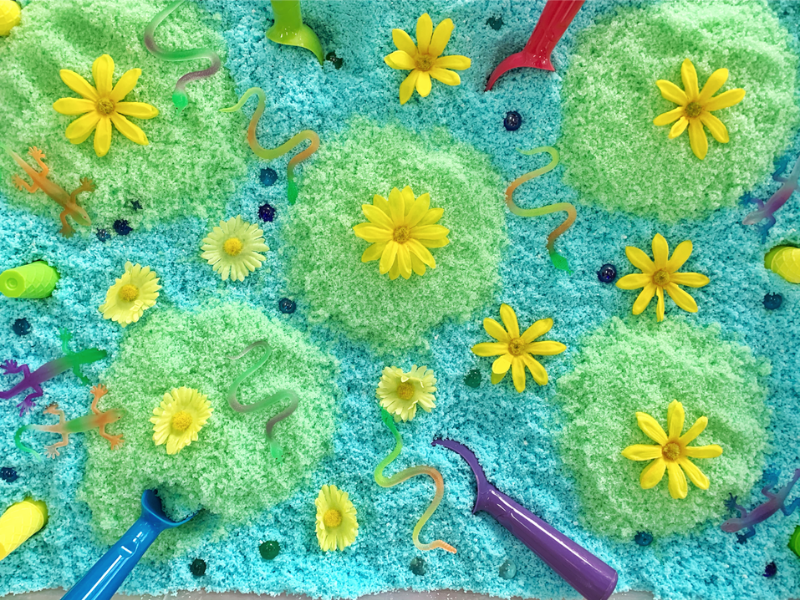
Once they’ve had the chance to really explore and discover, you can start adding in some elements that will encourage imaginary play––small, plastic figurines are a favorite of mine. Plus, you’ve probably got a bunch of those lying around at home!
Do you have the whole Peppa Pig family? Throw them in your sensory bins. Cars work! Dinosaurs work! Little dolls work! My preference is something plastic that can be easily rinsed off, but truly whatever you’re comfortable with and your child enjoys playing with is great.
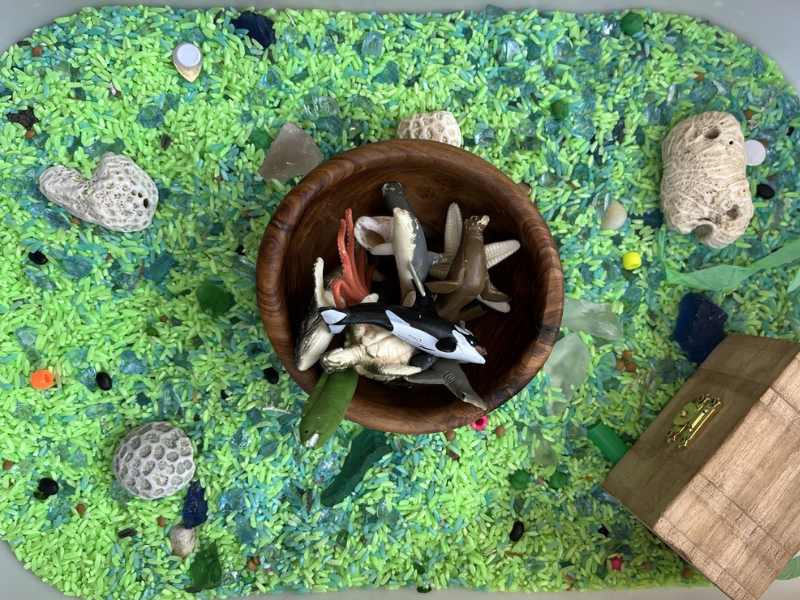
When you’re done, put the lid on, store them away, and then bring them out at another time for more play. Or try changing the tools or the toys, and you may find kids spend just as much time with the bins as they did in the beginning!
You can even incorporate a book to enhance play. Read the book first, and then let your child play with the bin. Whatever the theme of your bin is, you are sure to find a book that could go with it.
Check out my Makers Instagram or Facebook feed for some unique themed sensory bins, and I hope you will begin to love sensory bins as much as I do!
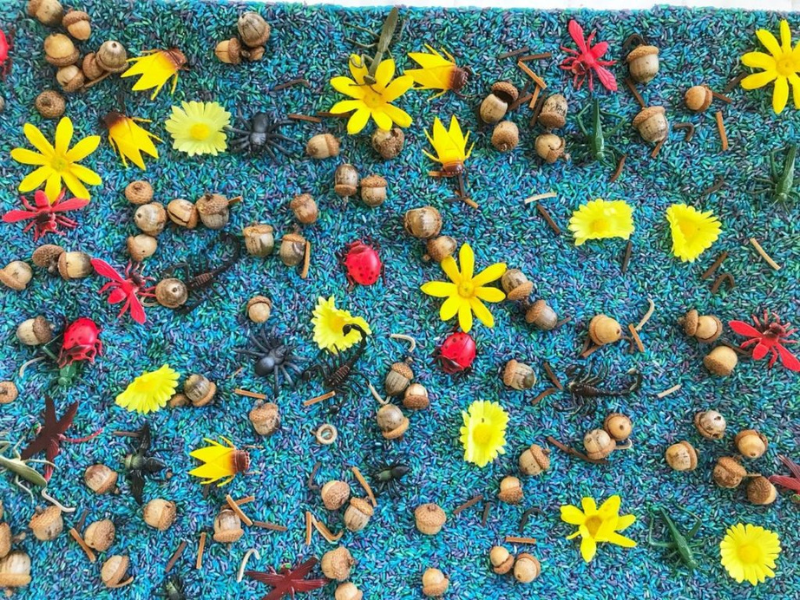
More Sensory Play for Kids
- The Ultimate Guide to Sensory Bin Materials
- Making Oobleck & What to Do with It
- How to Make Cloud Dough for Kids
- How to Make Aquafaba
- How to Do a Baking Soda Experiment with Kids
- Art & Sensory Play for Toddlers
Pin It for Later
